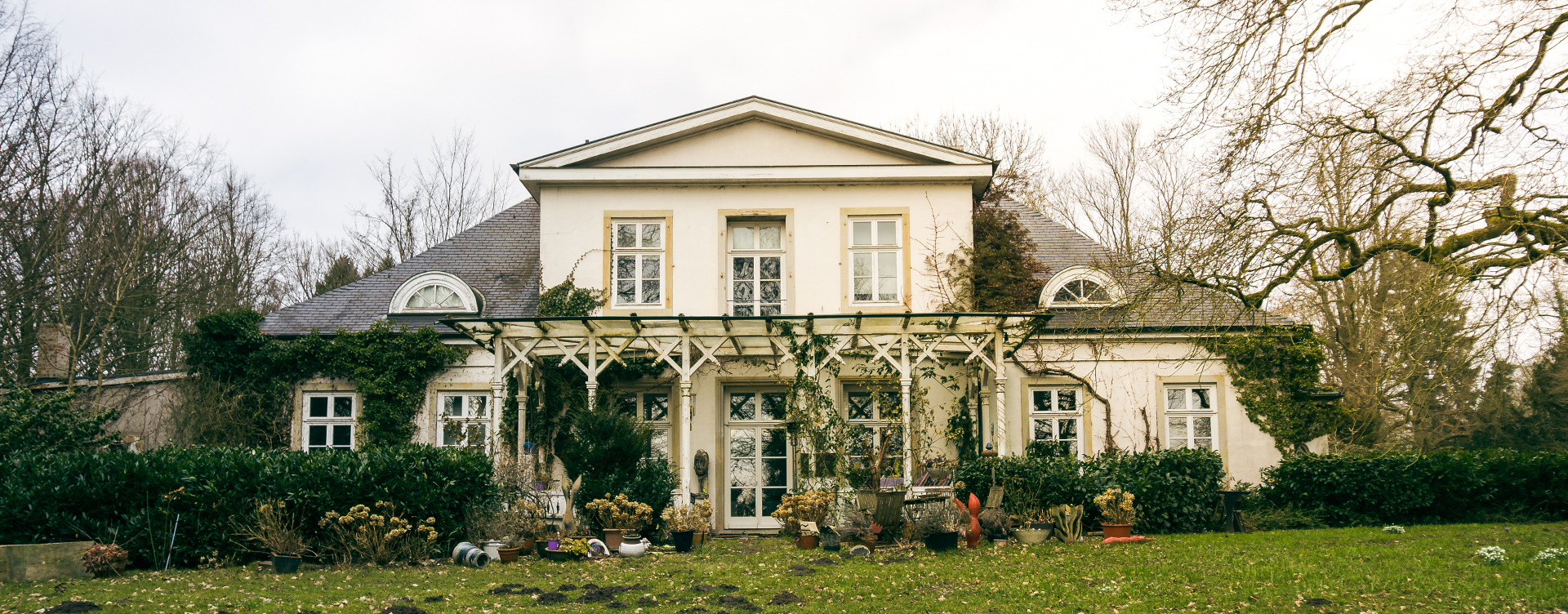Lesmona
House
This country seat, built in classicist style, is probably the oldest on the Hohe Ufer (high bank) of the Lesum. It is presumed that on this site also was the castle of the counts of Lesum.
The fact that there was a county of “Lesmona” has been handed down because of a conflict between the counts and Bishop Adalbert of Bremen in 1048.
This bishop denounced the count to Emperor Henry III: their attitude was “suspicious” and he should see for himself “how their loyalty was doing”.
He only wanted to “subjugate the county to his diocese” out of pure greed for power.
He staged an attack on the emperor in the Marßel forests and blamed the count…it should look as if the counts had dared to “insidiously raise their hand against the emperor”.
There was a trial, a duel, the death of the count, the revenge of his son, his arrest and escape.
But the bishop had won on June 27th, 1062, the Lesum farm was transferred with all supplies to the Hamburg-Bremen church. This was the “sad outcome of the history of the Counts of Lesmona.”
Source of citations: Geschichte der Börde Lesum, by Heinrich Hoops, 1909
But, back to Lesmona House:
It was built in 1815 for the merchant Eberhard Heymann, as a country house and retirement residence; however, he did not enjoy it much, because he died in 1820 and bequeathed the house to Anton and Heinrich Walte… at that time it was called “Heinrichsburg,”whether after the then Emperor Heinrich (see above) or after Heinrich Walte… that is not known.
1862, the estate went to the hands of the Carl Melchers family and only then, in memory of medieval times, it was called “Lesmona House”.
The Name Lesmona stems from the medieval Lismona, Latin “lesca manare”, which means flowing reed (grass).
Hermann Melchers (1842 – 1918) added to the villa a coat of arms and a veranda.
In the summer of 1894, his niece Magdalene visited Lesmona House for the holidays, it became the eponymous ” Summer in Lesmona”.
Magdalene Melchers (born1875) writes in her diary about joy, love and suffering of a young woman from “better circles”.
Her letters remained hidden for a long time until M.M. decided to publish them in book form in 1951, 57 years later, and with great success: the epistolary novel was promoted by Thomas Mann and celebrated as the”work of art of a lifetime”.
M.M. uses pseudonyms, invented names, for all the people who appear she calls herself “Marga Berck”, the uncle Hermann Melchers becomes “Uncle Herbert”, the young Englishman who suddenly appears in Lesmona and with whom she immediately falls in love is called “Percy”, and the man she finally marries appears as “Dr Rudi Rethberg”.
She had written the letters to her friend Bertha (“Dear only Bertha!”….) from June 30th, 1893, on, then they ceased on March 15, 1896, when Bertha died, unexpectedly and much too young.
Text: Ch.Steuer, Lesmonastr.52, chusteuer@t-online.de
impressions
Berta Schellhass
Magdalena Melchers




